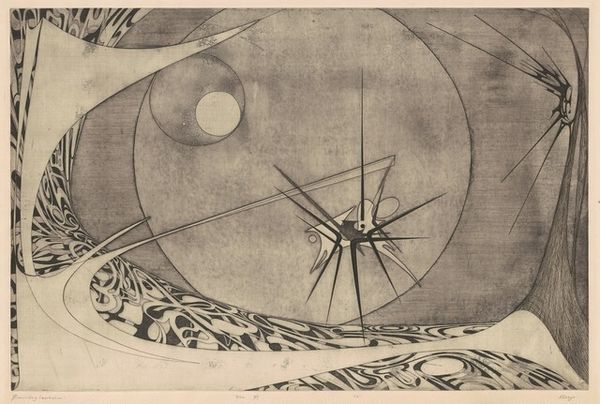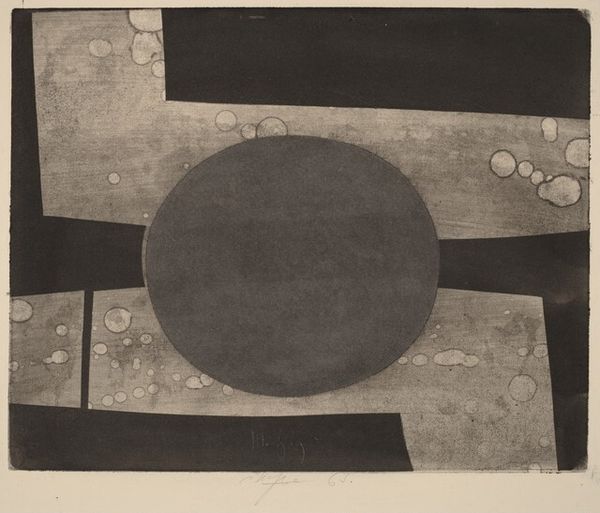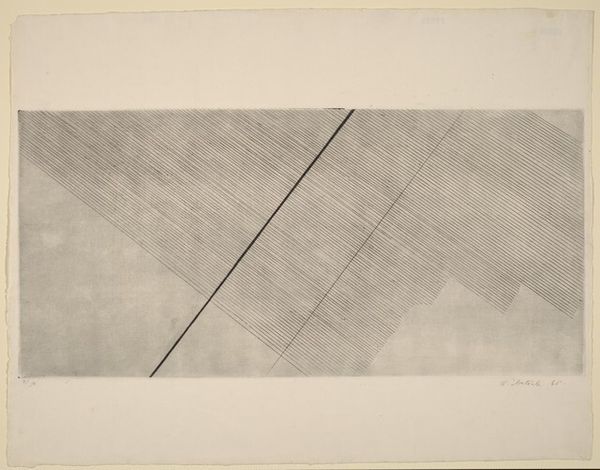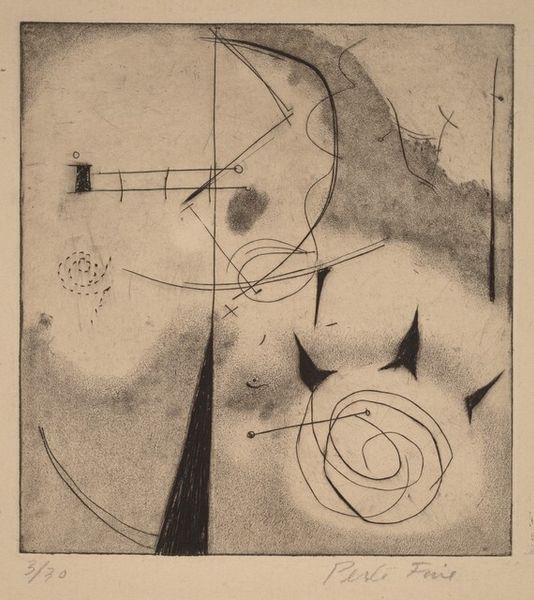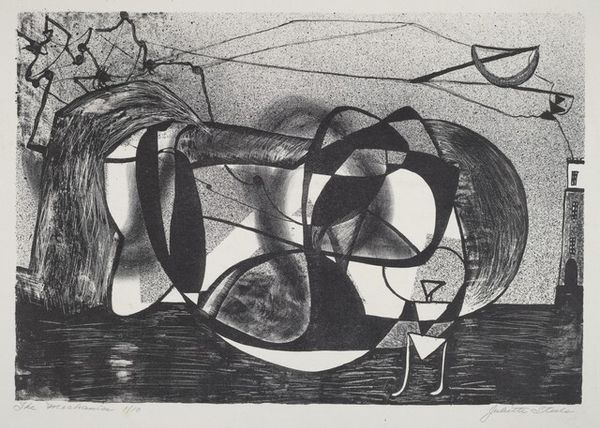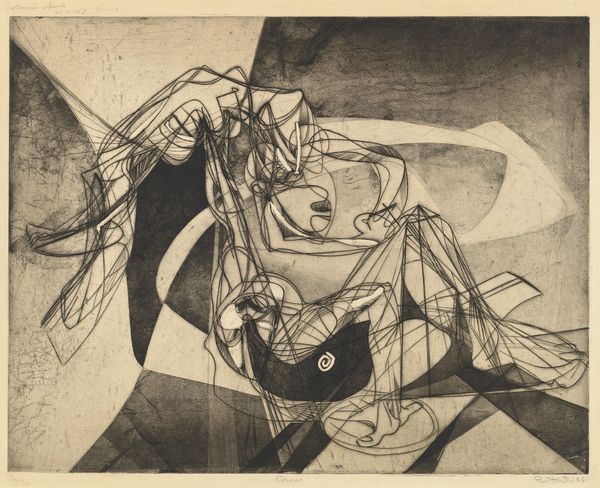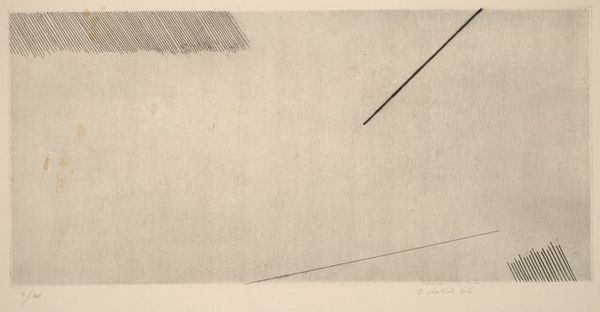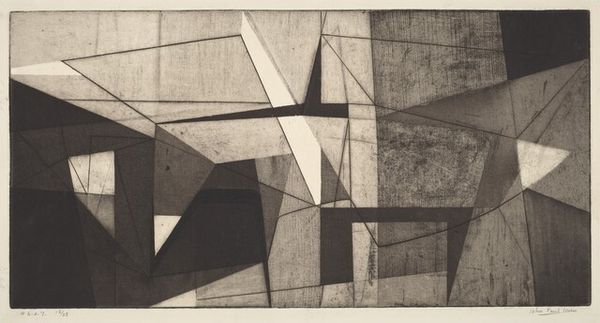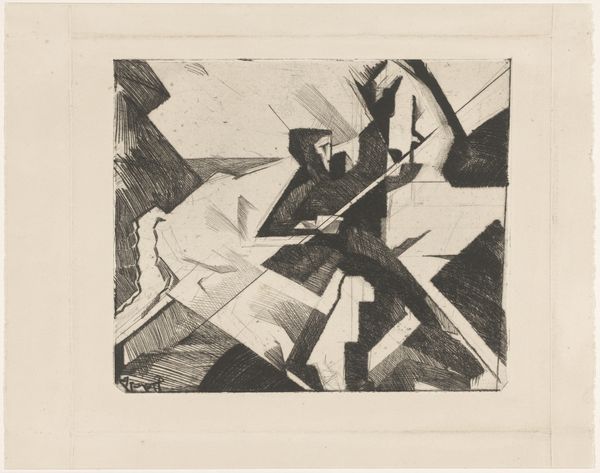
graphic-art, print
#
graphic-art
# print
#
abstraction
#
line
Dimensions: Image: 302 x 453 mm Sheet: 380 x 515 mm
Copyright: National Gallery of Art: CC0 1.0
Curator: Standing before us, we have Walter Hahn's 1951 print, "North Wind," a graphic study in stark contrasts. What strikes you most about it? Editor: Well, immediately I feel this chilling sense of… dominance. The scale seems immense, the looming figure is incredibly oppressive. Curator: The way that Hahn abstracts the titular north wind is indeed striking. I read this graphic-art as a depiction of power dynamics. Consider the socio-political climate of 1951, only six years removed from the end of WWII, amid rising anxieties around the Cold War. The north wind, so coldly rendered, embodies state-sponsored paranoia. What do you make of the sliver of a ship struggling along the horizon? Editor: The ship feels vulnerable, almost irrelevant in the face of such an all-encompassing force. I wonder about the historical narratives being echoed here? Could Hahn be drawing on age-old maritime tragedies—voyages crushed, ships at the mercy of elemental powers? Curator: Absolutely. The ship offers a poignant intersectional view when considering the wind itself as a force disrupting voyages for marginalized populations. Migration patterns, colonial expansions, even enslaved people thrown overboard come to mind, unsettling, urgent. Editor: But even just on a formal level, look how cleverly he's balanced abstraction with a trace of the real! The lines are economical but highly suggestive. How do the graphic processes contribute to this expression? Curator: Exactly. The limitations imposed by the graphic print – the commitment to black and white, to lines only – amplify the visual rhetoric and suggest social constraint. But is that all we can pull from this piece? I would want more perspectives here! Editor: A valid call for additional reading! But on my end, I now grasp that feeling I sensed from the very beginning – not dominance exactly, but an invitation to confront and wrestle with what it means to navigate powers we don’t control. Curator: And for me, the power lies not just in that confrontation, but in seeing how even ostensibly "natural" phenomena like weather can become a lens for critiquing social inequities and historical oppressions. Thank you for bringing into consideration.
Comments
No comments
Be the first to comment and join the conversation on the ultimate creative platform.
